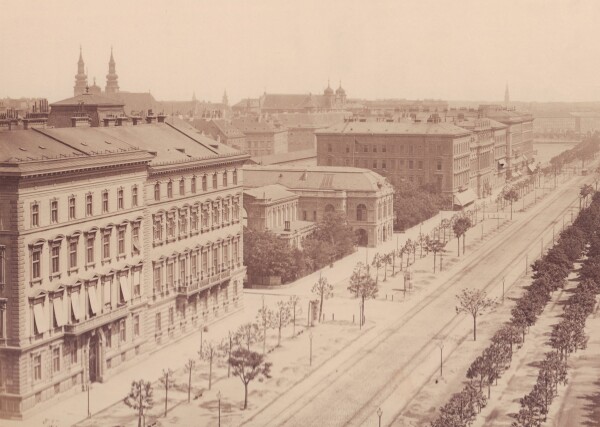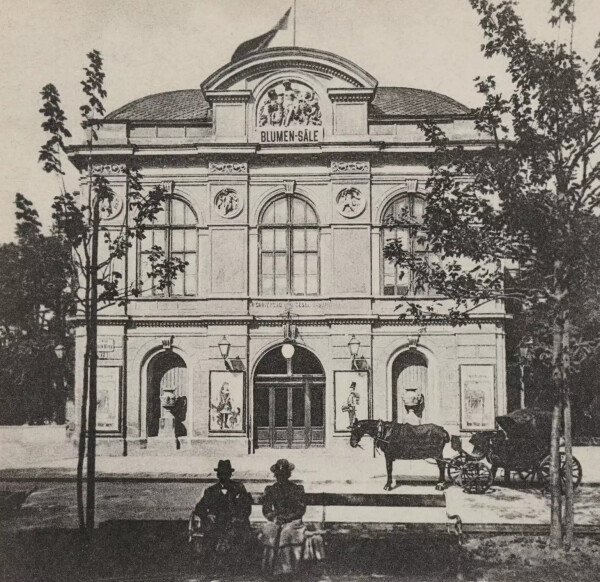Gartenbaugesellschaft

Building of the k. k. Gartenbaugesellschaft on Parkring, around 1900
© Klimt Foundation, Vienna

Flower rooms of the k. k. Gartenbaugesellschaft at Parkring 12, 1904
© Wien Museum
In 1864, the Gartenbaugesellschaft [Vienna Horticultural Society] opened its own exhibition building on Vienna’s Ringstraße, which soon became a popular venue for events. From March to June 1898, the first exhibition of the newly founded Association of Austrian Artists Vienna Secession was held at this location.
In 1863/64, the Gartenbaugesellschaft [Vienna Horticultural Society] constructed its own exhibition building, designed by August Weber, the architect of the Vienna Künstlerhaus, in a Renaissance style. The building complex was located opposite of the newly opened Stadtpark on Vienna’s Ringstraße and consisted of a main building with a cellar, two lateral wings, a terrace and vast gardens with greenhouses. The building and the premises extended over 3650 square klafters (13,100 m²). The single-storey main building, in particular, offered great functionality: These rooms – the so-called “flower halls” – were initially intended for the association’s own flower shows, but were soon rented out to other institutions for exhibitions and temporary events, such as concerts, conferences, soirées and dances. In 1898, for instance, the newly founded Vienna Secession held its “I. Kunst-Ausstellung der Vereinigung bildender Künstler Österreichs” [“1st Art Exhibition of the Association of Austrian Artists”] at the Gartenbaugesellschaft building.
Decline of an Event Location
Even though the Gartenbaugesellschaft building had been well frequented over more than 50 years and had become a popular venue in Vienna, a newspaper report in the Neue Freie Presse reveals that the first plans to sell parts of the premises and demolish the building – partly because of structural damage – date back to 1911. This was presumably due to the fact that the horticultural society, founded in 1837, had been in financial difficulties ever since acquiring the property. After World War I, the Gartenbaugesellschaft building housed a cinema; its cellar contained a wholesale flower market for a few more years. Around 1960, the entire building was demolished. In its place there is now a modern, multi-storey building complex as well as a cinema still called the “Gartenbaukino.”
Literature and sources
- Österreichische Gartenbaugesellschaft (ÖGG). www.oegg.or.at/ueber-die-oegg/neue-geschichte-der-oegg/testseite-geschichte/ (03/15/2020).
- Neues Wiener Journal (Abendausgabe), 05.04.1898, S. 15.
- Neue Freie Presse, 25.01.1911, S. 9.
- Felix Czeike (Hg.): Historisches Lexikon Wien, Band 2, Vienna 1993, S. 467-468.
- Peter Panholzer: Die Blumensäle am Parkring. Zur Geschichte der Gartenbaugesellschaft und ihrer Ausstellungsgebäude, in: Alte und moderne Kunst. Österreichische Zeitschrift für Kunst, Kunsthandwerk und Wohnkultur, 13. Jg., Heft 100 (1968), S. 16-23.

